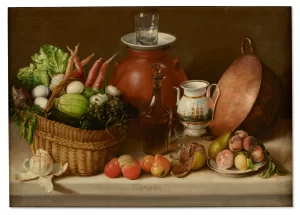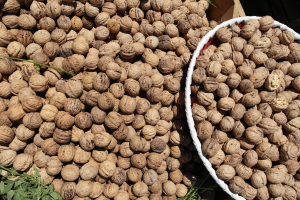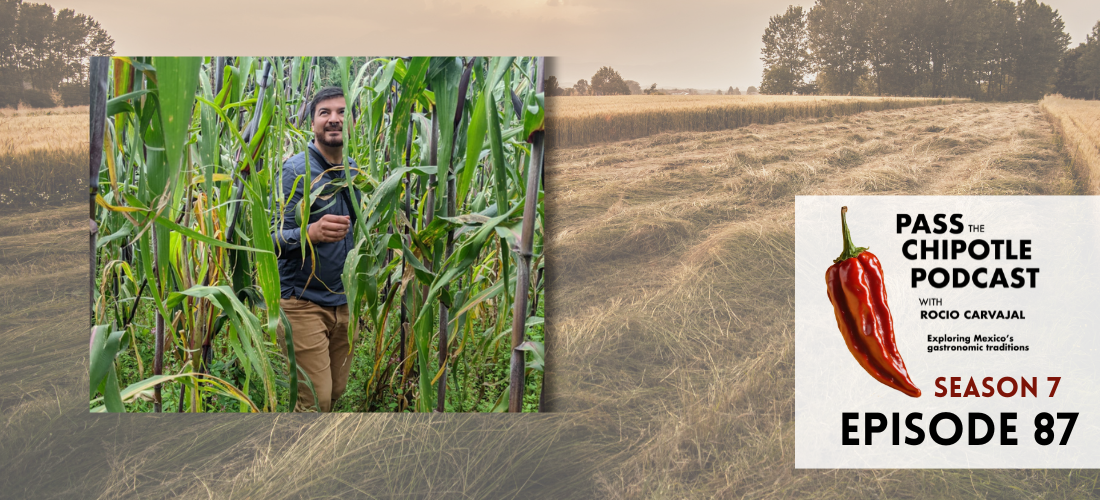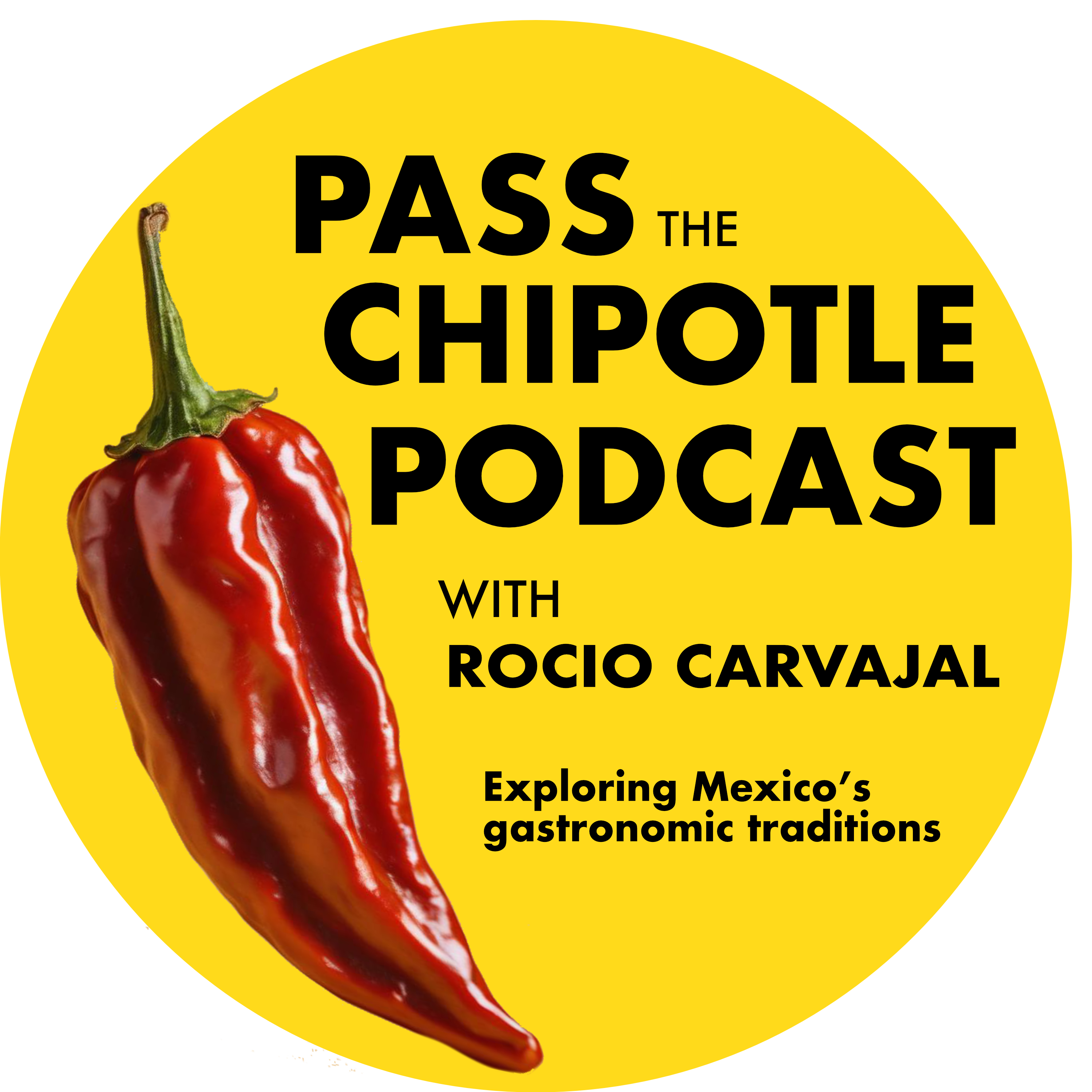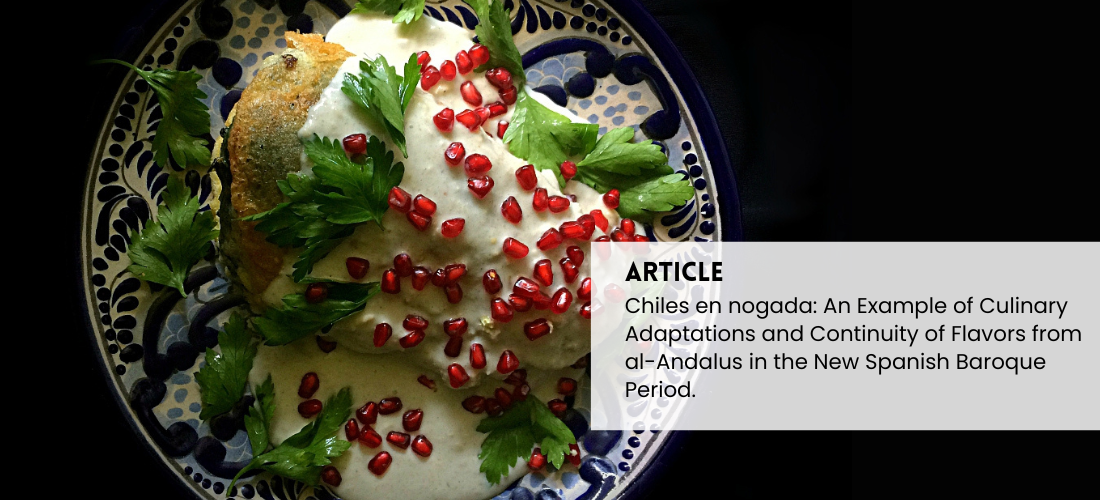
Chiles en nogada: An Example of Culinary Adaptations and Continuity of Flavors from al-Andalus in the Novohispanic Baroque Period.
By Rocío Carvajal.
Para leer una version es español de este articulo da click aquí
Filled with a spicy and fruit-laden minced meat, the poblano chile is placed in the centre of a Talavera platter, dressed in a delicate golden batter of eggs beaten to stiff peaks, and then covered with a generous portion of a whitish sauce made from the seed known in Mexico as “nuez de Castilla” (Castilian walnut). This “nogada” is slightly grainy in texture, dense, sweet, and surprisingly fresh, with notes of nutmeg, sherry, sugar, and goat cheese; finally, it is garnished with the juicy crimson seeds of the pomegranate and delicate parsley leaves, which together represent the colours of the tricolour flag of the “Ejército Trigarante” that was victorious in the Mexican War of Independence in 1821. But is this myth true? and What is behind the cultural configuration of this dish?
The Economic and Cultural Impact of European Expansion into Asia was quickly overshadowed by the incursion into the Americas, which since the 16th century secured for Spain almost total control of the most complex and profitable naval routes in the North Atlantic and the Pacific. In agricultural and culinary terms, a true revolution occurred, accelerated by the extraction and dissemination of edible animals and crops, which forever transformed the global development of what we now know as national cuisines. On the other hand, the period from the 16th to the 19th centuries accounts for the unpredictable and surprising continuity of flavours, knowledge, and legacies from al-Andalus in the Americas, whose indelible mark is still present today in dishes as emblematic as the celebrated Chile en nogada from the city of Puebla, Mexico, whose preparation and enjoyment is a bastion of regional identity and pride.
The Flavour of Memory.
The extensive historiography of New Spanish life has carefully examined economic, legal, political, military, and even health aspects. However, the neglected study of food remains a fertile field of information that has allowed us to observe and understand the complex dynamics of exchanges and surprising legacies from al-Andalus, which found a space for reinvention and continuity in the New Spanish Baroque period. More than 530 years after the fall of the Nasrid Kingdom of Granada, the echoes of its flavours continue to delight the palates of diners in the central highlands of Mexico.
The Cultural Construction of Flavors or the Gustatory Lexicon of New Spain
Was determined, on the one hand, by the eruption of culinary traditions that were more than “Spanish”; they were the product of the long regional hybridisation of Celtiberian, Roman, Visigoth, Sephardic, and Muslim cuisines. On the other hand, the heterogeneous gastronomic landscape of Mesoamerica presented multiple regional and local food systems that were complemented by extensive trade networks. Once the conquest phase had passed, colonial immigration gave rise to the creation of multicultural urban centres that over the centuries generated their own culinary identities. When read as intangible memory, these identities narrate the processes of transformation and creation of complex systems of flavours, textures, combinations, and techniques that, in the Baroque context, were inevitably a vehicle for expressive creativity in the form of edible works of art at the centre of new social rituals.
The Birth of the Global Pantry.
The scale and scope of global colonial extraction and dissemination of edible products had an impact beyond our comprehension, as today we take the presence of products from any corner of the world in our own kitchens for granted. However, in the context of European imperial expansion, the enormous influx of crops and edible products from the Iberian Peninsula gave rise to three important dynamics that determined the transformation of gastronomic traditions, allowing us to examine the durability of the agricultural and culinary legacy of al-Andalus.
-
The first dynamic refers to the long process of adopting the cultivation of edible plants. While there are many successful examples, the adoption of certain fruits and vegetables was slow, confusing, and sometimes unsuccessful.
-
The second dynamic relates to the cultural re-signification of ingredients. Centuries ago, many of them played a complex culinary and symbolic role in al-Andalus society, but their extraction and introduction to the Americas “stripped” them of these attributions, giving rise to new meanings and uses.
-
The third dynamic is related to the agricultural adaptations of imported crops and the creation of new production chains.
Example 1:
In the manuscript of the Franciscan friar Gerónimo de San Pelayo (1780), established in Mexico City, several recipes for stuffed eggplants are mentioned, leading us to assume that they were cultivated with some frequency in religious gardens. However, there is a notable absence of recipes and information about their consumption outside these enclosures, suggesting that their adoption by the rest of the population, both indigenous and mestizo, was practically nil. Why? The preparation of eggplant requires simple but precise steps to avoid the oxidation of its flesh, which results in an unpleasant bitter and spicy taste. We then assume that the lack of knowledge about these techniques caused those who tried to prepare it to be unpleasantly surprised.
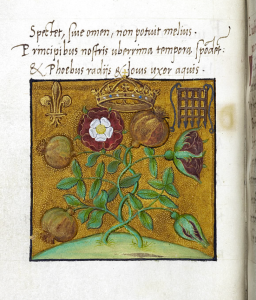 Example 2:
Example 2:
The pomegranate and its fruits were highly prized in the Nasrid Kingdom of Granada, and its cultivation adorned the gardens of the Generalife. After the Reconquest, the pomegranate was re-signified by the Catholic Monarchs and became the royal emblem of Catherine of Aragon (1485-1536), who married Henry VIII of England. Later, we see that in New Spain, the presence of pomegranate trees was a constant in early religious and domestic gardens, notably adapting to the soils of the central highland territory. Although the cultivation lost all notion of its cultural importance in the Muslim world, it is an example of the continuity of fruit cultivation from al-Andalus.
Example 3:
The case of sugar illustrates the second dynamic related to the cultural re-signification of ingredients. In Mesoamerican cultures, the culinary concept of sweetness and sweetening substances were already known, among them honey from the melipona bee (Melipona beecheii), syrup made from maguey sap, and juice from corn stalks. However, these were not produced in large quantities to generate large production chains, and there were not many derivatives of these substances. In contrast, in al-Andalus, the cultivation, trade, and processing of sugarcane (Saccharum officinarum) were of utmost importance for the development of regional economies. Similarly, products derived from it, such as granulated sugar, molasses, and syrups, gave rise to a vast pastry tradition, whose consumption was part of leisure and conviviality practices in social dynamics that facilitated intimate encounters, strengthening social bonds around the consumption of sweets and sweetened drinks, displaying the refinement of hosts and guests, in addition to possessing symbolic values linked to religious festivals and rites of passage such as weddings, births, and baptisms.
The New Spanish cultivation of sugarcane began early, around 1523, and two years later, the first sugar mills were documented. Although foreign to the conviviality practices and sugar consumption of Muslim elites, the governing castes and other elites adopted it similarly, and sugar use was incorporated into new dishes, beverages, food preservation techniques, and the creation of a unique confectionery. It is worth noting that sugar consumption and the derivatives of its production were marked by social distinction, as while elites consumed refined sugar, mestizo and indigenous groups adopted the consumption of piloncillo or panela, which was much cheaper and considered of inferior quality and status.
Finally, to illustrate the third dynamic, agricultural adaptations, and the creation of production chains, let’s look at the example of the Castilian walnut.
We go back to the religious gardens established by friars in the early New Spanish monasteries, which introduced and carried out the slow adaptation of crops to new soils, climates, and altitudes. We find that in those established in the higher regions, crops like onions, garlic, leeks, carrots, and turnips were successfully introduced, as well as fruit trees like apple, peach, pear, and plum. Equally important was the introduction and cultivation of seeds like almond and walnut (Juglans regia), which was renamed “nuez de Castilla” (Castilian walnut). The excellent document “Flora agrícola y forestal de al-Andalus” describes that the walnut tree requires humid and cold soils, and rough, rocky, sandy, and humid terrain. Considering this, it is no surprise that walnut trees quickly adapted to the towns located on the slopes of the Popocatépetl volcano in the central highlands of Mexico, whose average altitude is 2,460 meters above sea level, with sandy soils with a profuse presence of igneous rocks due to volcanic activity, abundant underground and meltwater that produces a highly fertile subsoil, a humid and temperate environment with marked seasons, and prolonged cold weather in autumn and winter. The limited production of Castilian walnut during the New Spanish period faced great demand for its culinary, medicinal, and cosmetic use, making it quickly become a highly valued commodity.
Chile en nogada: The Invention of a Nationalist Myth.
There is a plethora of academic and outreach work on conventual and domestic cuisine during the New Spanish period in Puebla de Los Ángeles, today the capital of the state of Puebla. One of the most popular stories is that of the origin of chile en nogada. According to the historian José Luis Juárez López (2018), there are at least three versions, all with notable variations and fictitious elements. All of them, however, focus on an invented moment in which the creation of this dish is a metaphor for the marriage of religion, colonialism, and the invention of a nationalist discourse that would gradually build up to the Mexican War of Independence. In addition, according to the researcher Lilia Martínez (2015), its post-colonial symbolism has strong gender connotations due to the canonization of the nuns, who supposedly, moved by patriotic fervour, invented this dish, which represents the idea of the immaculate purity of the Mexican mother, who selflessly makes sacrifices for the nation.
The reality is that the conventual origin of chile en nogada is false; its preparation was the result of domestic and ceremonial cuisine during the Baroque period. This cooking tradition inherited dishes from al-Andalus and adopted products from the Mesoamerican highlands, ultimately creating a delicate balance of flavours and textures that were essential in the celebration of colonial rites of passage such as weddings, baptisms, funerals, and special religious celebrations.

A False Origin Story.
Chiles en nogada were neither created by nuns from the Santa Monica convent nor invented to celebrate the triumph of Agustín de Iturbide in 1821. Chiles en nogada and their variations, such as “chiles rellenos,” have been present in the kitchens of Puebla for over 200 years and were served during important celebrations. They symbolized the opulence, creativity, and status of those who prepared them, long before the nationalist myth took hold. Thus, chile en nogada represents a living example of the gastronomic continuity from al-Andalus to the New Spanish Baroque period, a tradition that continues to this day.
References
- “Libro de cocina del hermano fray Gerónimo de San Pelayo” es un manuscrito fechado al 17 de febrero de 1780, tras su estudio y transcripción se publicado por el Consejo Nacional Para la Cultura y las Artes de México bajo la “Colección Recetarios Antiguos”.
- “La producción frutícola en al-Ándalus un ejemplo de biodiversidad” de la Doctora en Filología Semítica Expiración García Sánchez, disponible en: https://tinyurl.com/2antuaco
- “Pomegranate and rose: Henry VIII and Katherine of Aragon” que menciona la imagen del granado en la heráldica de Catalina de Aragón y Enrique VIII de Inglaterra tras contraer nupcias. Disponible en: https://tinyurl.com/229gyqf5
- Romero F. (1991). “La agricultura en la época colonial.” En: T. Rojas R. (Coord.) La agricultura en tierras mexicanas desde sus orígenes hasta nuestros días. CONACULTA, Grijalbo. México. pp. 139-215.
- Mazzetto, E. (2017). “¿Miel o sangre? Nuevas problemáticas acerca de la elaboración de las efigies de tzoalli de las divinidades nahuas.” En: Estudios De Cultura Náhuatl, 53, pp.73–118. Disponible en: https://tinyurl.com/24akbda6
- Antonio Malpica Cuello (coord.) (1994). 1492: Lo dulce a la conquista de Europa. Actas del Cuarto Seminario Internacional sobre la caña de azúcar, Motril, 21-25 septiembre de 1992. Diputación Provincial de Granada. Disponible en: https://tinyurl.com/2y59mvrb
- Carabaza Bravo, Julia María. (2021). “Panorama general de las fiestas interreligiosas privadas y públicas celebradas en al-Ándalus.” En: Revista RIVAR Vol. 8, nº 24. Sep. pp. 247-263. Disponible en: https://tinyurl.com/27gmaotu
- von Wobeser, Gisela. (2004). La hacienda azucarera en la época colonial. UNAM. Instituto de Investigaciones. Disponible en: https://tinyurl.com/2835lk5c
- La historiadora mexicana Enriqueta Quiroz presenta en su texto “Comer en Nueva España. Privilegios y pesares de la sociedad en el siglo XVIII” las formas de consumo del azúcar y sus derivados en la Nueva España. Disponible en: https://tinyurl.com/262ydeas
- Peralta de Legarreta, Alberto. (2018). “Las cocinas de los monasterios franciscanos novohispanos del Siglo XVI. Génesis del mestizaje gastronómico de México.” En: CULINARIA No. 15, Enero- junio. UAEMéx. pp. 21 – 37. Disponible en: https://tinyurl.com/yexkgap7.
- García-Sánchez, Expiración, et al. (2021). Flora agrícola y forestal de al-Ándalus. Vol. II: Especies leñosas. Ministerio de Agricultura, Pesca y Alimentación. Madrid. Disponible en: https://tinyurl.com/2b78y2jq
- Garza Marcué, Rosa María y Vázquez Ahumada, María Cecilia. (2017). Mujeres construyendo un mundo, las recetas del convento de Santa Mónica en Puebla. BUAP; Domínguez, Alejandra, et al. (2016). Bocados de Angeles. BUAP.; Guerrero Ferrer, Adriana. (2000). La dulcería en Puebla. CONACULTA.

